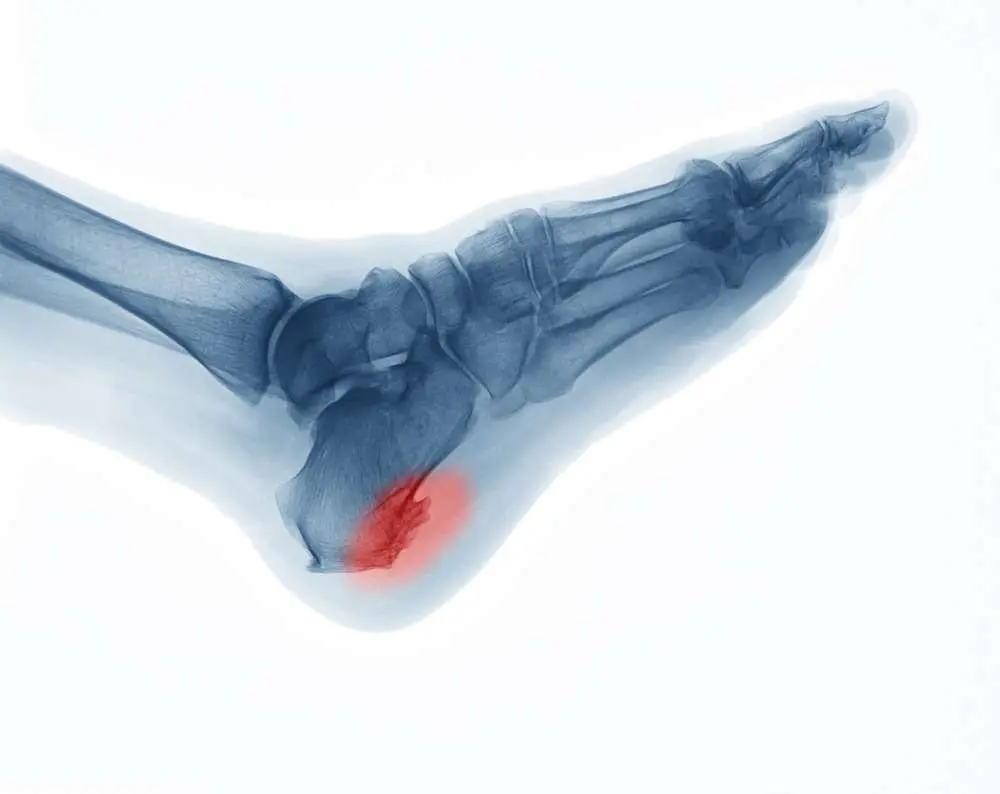
The heel spur, also called the calcaneal spur, usually manifests by affecting your plantar fascia.
This bony outgrowth from the heel bone is normally painless. However, if you play a sport that is heavy on your feet, such as running, your fascia will experience increased tension and can thus result in pain.
Learn the 4 best natural treatments for healing the calcaneal spur.
A targeted stretching routine
If you’re an athlete or just someone who likes to keep active, it can be frustrating to be forced to slow down your activities due to persisting pain.
Heel spur is directly related to a lack of elasticity in the plantar fascia, thus you may benefit from stretching exercises.
Here are 2 simple exercises you can do in the comfort of your own home.
First, stretch the plantar fascia while sitting:
- Position your aching foot on the opposite knee.
- Grab the affected foot’s toes and pull them up for 10 seconds.
- Repeat the maneuver from 5 to 10 times.
Then, stretch the Achilles tendon while standing:
- Face a wall, standing about two feet away, and place your hands on it.
- Put your left foot back without lifting the heel and bend your right leg as you lean forward.
- Keep this position for at least 30 seconds.
- Repeat this process by changing legs.
These exercises should suit most of the active people affected by heel spur, however, you may also require other types of stretches, depending on your case.
For this reason, do not neglect a podiatrist’s input when creating a personalized treatment plan.
Acupuncture
Acupuncture serves to treat musculoskeletal pain in the case of arthritis, bursitis, and tendinitis.
It is also a good adjuvant therapy method to relieve heel spur pain.
However, since heel spur sometimes implies more serious plantar problems, you shouldn’t base the entirety of your treatment around acupuncture.
This form of alternative medicine should accompany more comprehensive podiatric treatments like:
- Foot orthoses;
- Heel support pads;
- Less commonly, heel surgery.
Consult your podiatrist to learn about the best options depending on your lifestyle.
Hot or cold compresses
Hot or cold compresses are often used as a first resort, because of their anti-inflammatory and decongestant properties.
However, if your heel spur causes you more pain than usual, you may be dealing with a more severe plantar fascia inflammation or even a fractured heel.
It’s best to play it safe and to contact a podiatrist as soon as you experience any unusual pain.
Essential oils
As with acupuncture, essential oils like peppermint and camphor can prove to be quite effective as a complementary treatment to relieve heel spur pain.
Essential oils provide the following benefits:
- They are easy to obtain.
- They are non-invasive, applied on the skin.
- They provide quick relief.
However, it is important to note that essential oils are not a comprehensive solution capable of treating severe fascial deformities.
If you have a more serious case, you should consider solutions such as foot orthoses or cushioned heel pads to let you keep moving comfortably despite the bone outgrowth.
Thanks to PiedReseau, you can continue to move safely, even with heel spur
With several clinics present throughout Quebec, PiedRéseau offers treatment for a variety of foot pathologies, including heel spur.
While this condition is not always painful, it can become quite bothersome.
Therefore, it is important to treat it as soon as possible.
Consult your PiedRéseau clinic now to enjoy an effective and personalized treatment for your heel spur.